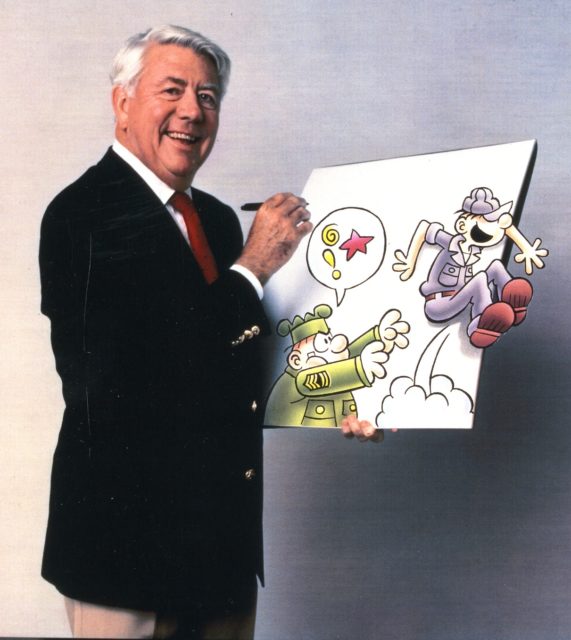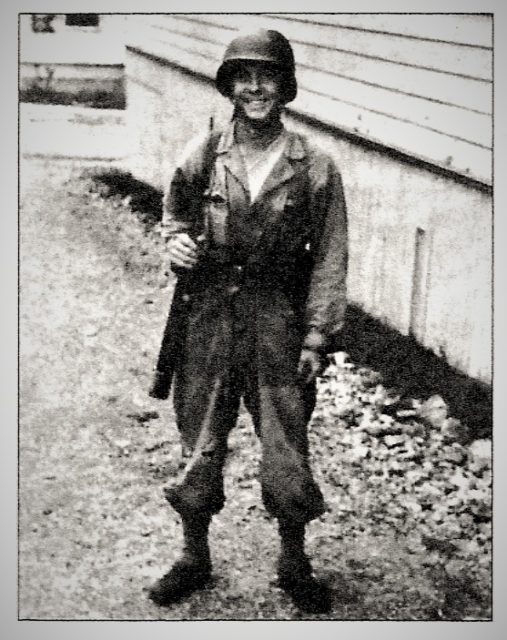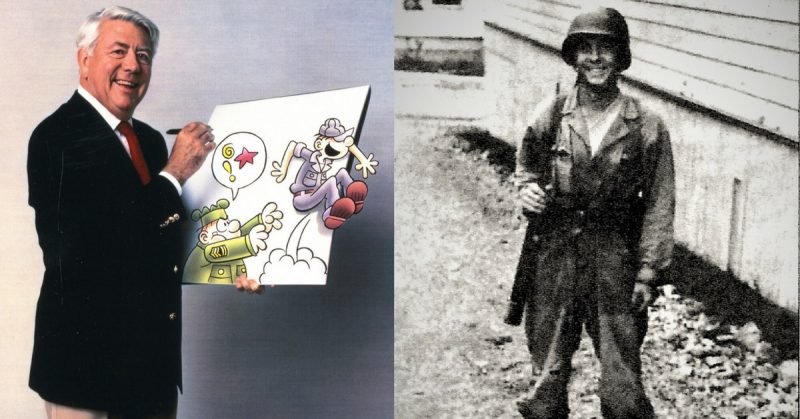War History online proudly presents this Guest Piece from Jeremy P. Ämick, who is a military historian and writes on behalf of the Silver Star Families of America.
Mort Walker has created a colorful (Army green) cast characters under the lively title of “Beetle Bailey®” that has for decades demonstrated the lighthearted aspects of the U.S. Army. For Walker, the source of his inspiration for these characters was not entirely steeped in fiction, but in part attributable to his own experiences as a soldier while serving in Missouri during the Second World War.
A native of El Dorado, Kan., Walker had already developed a reputation as a budding cartoonist when he transferred to the University of Missouri-Columbia in 1943 after completing a year at Kansas City Junior College.
“I got my draft notice in 1943,” said Walker during a recent phone interview from his home in Stamford, Conn. “I can’t say that I was really surprised when it came because several of my friends were also drafted about the same time,” he added.
Leaving his studies at the university, Walker traveled to Ft. Riley, Kan., where he was issued his military uniforms, was given a number of innoculations and spent the next “week or so” undergoing the process of induction as a private into the United States Army Air Corps.
“Next thing I know, I was on a train headed to Florida,” he said. “They placed me with a group of trainees at a resort hotel with a golf course located on the bay near Clearwater that had been converted to a miltiary training site during WWII.” With a chuckle, he added, “We had all of the amenities of being on a great vacation!”

For the next several weeks, Walker completed basic training and even learned to conduct military drill and ceremony on the nearby golf course. However, his assignment with the Air Corps would soon transition to regular Army service when he received orders to report for radio repair school at Camp Crowder near Neosho, Mo.
“I don’t know why I was selected for radio school,” Walker laughed, “because I had absolutely no experience in that type of work whatsoever; I just accepted what came to me.”
While immersed in the daily rigors of Army training and attending classes for radio repair, Walker was involved in an event that would provide the inspiration for the fictional camp that would years later develop into the home station for a number of his cartoon characters.
“There was flooding on (Camp) Crowder and we had to get up and get out of the barracks to sandbag the area and build a wall to keep out the water,” he recalled. “That’s where I came up with ‘Camp Swampy,’ because what better name for a camp full of water.
While in training, the young soldier saw a sign advertising the availability of college-level training courses in psychiatry. Walker applied for the program and was accepted, packing up and leaving Camp Crowder after completing several weeks of radio repair training.
When he arrived at Washington University in St. Louis, he handed over his training papers and was informed he was approved for engineering courses under the Army Specialized Training Program. (The program was later renamed the Engineering, Science and Management War Training program and ran from 1943-1945, offering 12-week courses to active duty service members with a focus in such fields as foreign language and engineering.)
For the next year, he attended courses during the day and in the evenings “stuffed his bed to make it look like I was sleeping and snuck out of the barracks to date a beautiful blonde girl I had met during a party at a local sorority house,” he mirthfully explained. “I never got caught and just kind of outsmarted the Army.”

As Walker recalled, although he and his fellow soldiers attended college-level courses, they maintained a semblance of Army life by living in a barracks enviroment while being supervised by a “big, heavy-set sergeant who always looked like he was mad and was always ordering us around,” he said.
Named Octavian Savou, the sergeant, Walker noted, served as the inspiration for the character that became Sergeant Snorkel.
“I remember there was a time that the sergeant wrote all of us (soldiers) a poem titled ‘My Boys,’ and placed it on each of our pillows. That’s when we realized that this man had a heart and we weren’t mad at him anymore.”
Graduating with honors from the program at Washington University, Walker later attended infantry training in California and Officer Candidate School at Ft. Benning, Ga. He received his commission as a second lieutenant and was transferred to Naples, Italy, serving out the remainder of his military career as officer in charge of a German prisoner of war camp.
“In Italy, I had my own Jeep and interpreter and nobody really seemed to care too much what I did,” he said. “For me, it was really the biggest vacation that I ever had and I drew a lot of pictures (cartoons) while I was there, most of which I still have in albums.”
It was in Italy that he encountered a general who “never seemed to know what was going on and and mainly just drank a lot and went around conducting inspections of our living quarters,” who, he explained, later transitioned into the character “General Halftrack” in the Beetle Bailey strip.
When the veteran left the service in 1946, he returned to the University of Missouri and earned a degree in the humanities before embarking upon a career that would result in a comic strip featured in newspapers nationwide. But as Walker remarked, it was his time spent in the military, much of that in Missouri, that stimulated his interest in presenting the lighter side of Army life based upon many of his own encounters.
“It was quite a multitude of experiences that I had in the Army and I was always figuring out a better way of getting things done and then doing it,” said Walker. “It seemed like I always got away with doing what I wanted to do and some of that might come through in Beetle Bailey.”
He added, “But I’m glad to see that the characters still resonate with a lot of people because Army life really hasn’t changed all that much over the years and almost all of the characters are likeable.”
